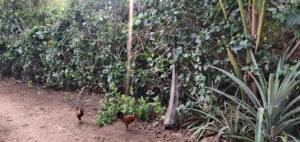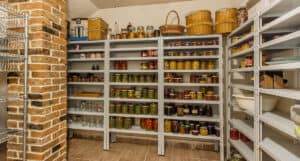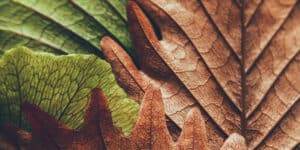As homesteaders, we are always doing and making something, always busy, and like any job with multiple tasks, we need numerous tools. Many homesteaders will practice ordinary skills such as baking, canning, and gardening, so for those categories, the tools required will generally be the same for everyone. However, you may need many other tools essential to building the homestead you want. For example, some homesteaders make homemade soap. Therefore, they’ll need supplies such as harvesting baskets, large jars, silicon molds, drying racks, and so forth, whereas someone who doesn’t make soap might only need some of those same tools. Let us go over tools that will help you accomplish the basics of homesteading, food, water, shelter, and heat, along with tools for backup or emergency.
Homestead Kitchen Tools
I spend lots of time in my kitchen; besides the actual tool, this room has the most items on the list. However, I’m not going to list every essential kitchen utensil. Instead, this list will focus on the equipment and tools you’ll need for preserving food. Of course, any working kitchen should have a large and small set of pots and pans, a variety of baking trays, and a set of knives, bowls, and utensils. I won’t recommend any appliances, as most can be done with good old fashion hand and arm work. But I will suggest a few for preserving; nonetheless, you can choose whatever small appliances you need to help you in the kitchen; it’s your homestead!
Canning Equipment
- Large stock pot or canning pot ( for jams, pickles, salsa, tomatoes, and other high-acid foods and recipes).
- Pressure canner (for low-acid foods like carrots, potatoes, corn, etc., meats, stews, soups, beans, and stocks.)
- Racks to fit in the bottom of canning pots
- Jar grabber
- Lots of jars in a variety of sizes, with rings and lids
- Reusable lids
- Funnel
- Ladle
- Cutting board
- Paring knife and large chopping knife
- 2- 4 large bowls or buckets. ( mixing, soaking, measuring, and holding food, etc.)
- Cheesecloth or materials for straining
- Colander and/ or strainer
- 4 cup/1 liter measuring cup
- Salt, sugar, vinegar
If you are new to canning, investing in the right tools for your needs is very important. A pressure canner is already intimating for many people, and throwing a price tag of a couple of hundred bucks on top of that can make you want to avoid canning altogether.
However, let me assure you, you can start with simple recipes that only require a large stockpot, something you might already have. Jams and jellies won’t feed you in the middle of winter, but it’s a good place to start. Water bath canning is easier, and many feel more confident using a pressure canner after becoming familiar with bath canning.
Most hardware stores will carry a starter kit for canning, which is usually under 20 bucks. These kits come with pot racks, jar grabbers, funnels, and sometimes a magnet grabber. Can I also state as a long-time home canner, you can never have enough jars…😊 Stock up on jars that you can use with new or reusable lids.
Other Useful Kitchen Tools
- Scissors
- knife sharpener
- Cast iron pot
- Cast iron dutch oven
- French press or peculator
Fermentation Supplies
- Large Jars
- Fermenting crock pot ( for sauerkraut and kimchi)
- Fermenting weights
- Coffee filters, cheese cloth, or material for straining
- Salt, sugar
- Vinegar mother or scooby
Fermenting is only for some people; however, it’s easy and only requires a little equipment, but rather time and patience. Fermented foods are also a vital need for gut health, and this practice is a healthy choice for you and a great way to reduce food waste and create a long-lasting product. If you plan on trying to ferment, the most important tool you can invest in is the weights, and they help prevent spoilage. You will also need a large jar, vessel, or crock for the processing.
Tools for Dehydrating
- Electric dehydrator with plenty of racks
- Trays for the oven
- Solar drying boxes, screens, or nets
- Drying Shed
- Fan for air circulation
I am a fan of dehydrating, which sometimes can be tricky since we are off the grid and mind every kilowatt used. The dehydration machines run for multiple hours and need a consistent power source. However, there are other options for drying.
The sun is a free drying source I use as often as possible. However, it is hot and can cook items easily. Using the sun takes more do-diligence yet less power. Various options allow you to dry anything from flowers and herbs to jerky and fruit leathers. No matter what you use, the most important thing is having a dry heat source with air circulation, protection from bugs and animals, and patience.
Freeze Drying Tools
- Freeze dryer machine
- Vacuum sealer
- Food storage bags (mylar food-safe bags)
- Oxygen absorbers
- Jars
- Airtight season containers
Homestead Yard and Garden Tools
Whether you are an organic farmer or practicing traditional methods, there are some standard tools I know I could not live without, and at the top of that list is The Claw. The Claw may only be available in some places; however, this is my favorite tool, so I have to share it; it is perfect for my garden because we practice no dig. The Claw allows me to dig out specific weeds, easily mix in compost and loosen the ground for root vegetables without digging into the microworld beneath the soil, which helps the garden grow. So for me, this tool is my go too, plus I can stand to use it, making it easier on the back. The rest are vital for any new and old gardener.
Garden Tools
- The Claw
- 1 Soft leaf rake and 1 hard short tooth rake
- Spade and Square shovel
- Hand tools; Hoe. Space, Rake
- Pitchfork
- Gloves, One with padded grips and one regular garden pair
- Knee pads
- Wheel barrel
- Growing pots, bags, and containers. Starting trays
- Cold frames, row covers, and, or greenhouse
- String or twine,
Other useful tools to consider for growing food
- Rain and water collection, water storages tanks
- Composting bin and boxes. Vermicompost bin
- Indoor lights, soil, fan, and reflective material ( indoor growing)
Animals On the Homestead
Your homestead doesn’t have to be a farm, but having animals definitely brings value to your land and goals. As vegetarian homesteaders, we raise chickens and ducks because they give us multiple benefits. My birds help keeps the pests down, make fertilizer, provide eggs for nutrition and added income, and help reduce food waste. Animals can be vital for any homestead, but not necessary.
However, if you care for animals, you are taking on a responsibility that should not be taken lightly. Like you, animals, no matter how short-lived their lives may be, have essential needs; Housing, food, water, warmth, and health care. It’s up to us to provide these things and practice daily care. Here are some tools to consider if raising animals. You may not need a post-hole digger if you raise chickens or rabbits. Use the list below as your guide to what tools and supplies you will need for the animals YOU choose.
Tools and Supplies for Animals
- Housing (a must-have for any animal)
- Hayfork (a must for animals with straw and hay bedding or feed)
- Post-hole digger and driver. ( for larger animals that need fencing in, or for any fence posts)
- Manure shovel
- Feed and water troughs
- Milking buckets ( only for milking animals)
- Fencing
- Grooming tools and clothing or blankets for winter protection
Around the Homestead House
General Hardware: Building and Repair Tools
Honestly, you can never have enough building, maintenance, and repair tools. However, a decent tool selection should include some of the following.
- Hammer and nails
- Level
- Screwdriver set and battery-powered drill, mixed sizes of screws
- Wrench set, mixed nuts, and bolts
- Staple gun and staples
- Crowbar
- Pickaxe
Wood & Heating
- Airtight wood burning stove with safe, up-to-date, and code piping for inside and outside
- Ax, hatchet. Manual splitter and replacement ax handle
- Chainsaw, with backup oil and gas
- Wood splitter
- Tarp or rain cover
- Fan or air circulation (if heating an entire space or home with wood heat)
Wood heating is non-essential but a great alternative option for heating and cooking. Whether you are supplying your wood or purchasing it, you will need a few essential items: an airtight stove for safe heating and cooking. Even if you are not chopping the wood down, having a couple of axes of different weights and sizes is vital.
A wood splitter is only for some but an excellent investment if you plan on sourcing and chopping your own wood; this will save hours of back-breaking ax work. Wood or not, a chainsaw is a must; I can’t tell you how many times we’ve cut down trees for posts, fencing, trellis, and more. Finally, wood needs to be dried to burn, so ensure it’s cured and then cover the wood when the wet and cold weather sets in.
Medicine & First-Aid Supplies
- First aid manual
- First aid kit
- Herbal medicine book
- Plant identification book
- Dried medicinal herbs
First aid for any house is crucial; knowing basic skills and having the essential medical supplies can be lifesaving. As you can see, I included herbal medical books and herbs in this list because we are surrounded by medicine. In our pantries, spice cabinets, and backyards, we can find tons of plants that can aid in an emergency and for every day. On top of modern first aid, this can be a vital skill for health and survival. Have access to medicinal and first aid options, so you are always prepared for any situation.
Apparel for Homesteading
This list will vary from climate to climate, yet there are a few constants, like work boots and gloves, clothing for weather protection, and washable items for dirty work. Here is a list to help you get started.
- Safety boots
- Rubber boots
- Raincoat and hat
- Thin work gloves for summer with padding
- Insulated work gloves for winter
- Thermal undergarments if in climate –10 or colder
- Washable apron
- Bug netting
- Sun Hat
- Winter hat, ear, and neck coverings
Emergency & Backup Supplies
We can benefit from having backup options for everything, but as long as we have a backup for the essentials, we should have no worries during emergencies like power outages, for example.
Solar and wind can be used in emergencies, but they can also offset your energy cost now, consider them for every day and during emergencies. Always ask yourself, how will I get and purify water when planning for emergencies? Where will I get food, how will I cook what I have, and how will I keep warm and dry? Hunger, cold, and dehydration are unnecessary when we prepare. Here
- Generator with spare fuel and oil, with tools for maintenance
- Invertor
- 12 or 24-volt Batteries and Rechargeable batteries
- Solar panels
- Mini wind turbine
- Hand water pump
- Hand saw Horse saw
Where to Source Tools and Supplies?
Homesteading is a DYI lifestyle; tools and equipment are vital for completing essential tasks, prepping for the coming seasons, and even reducing our carbon footprint. The right tools can make all the difference in homesteading, but if you are a beginner sourcing, these tools can get expensive.
Start with used and borrowed items, shop garage sales, and online posts—barter and trade items you don’t use for tools and supplies. Then, ask grandpa if he’ll donate some tools to your homestead. In time you can add to your collections and even upgrade; take care of the tools and supplies you have, and they will last for years.
Last but not least, when you buy tools and supplies and invest in name brands with good reputations, those products often last longer and have better warranties.








